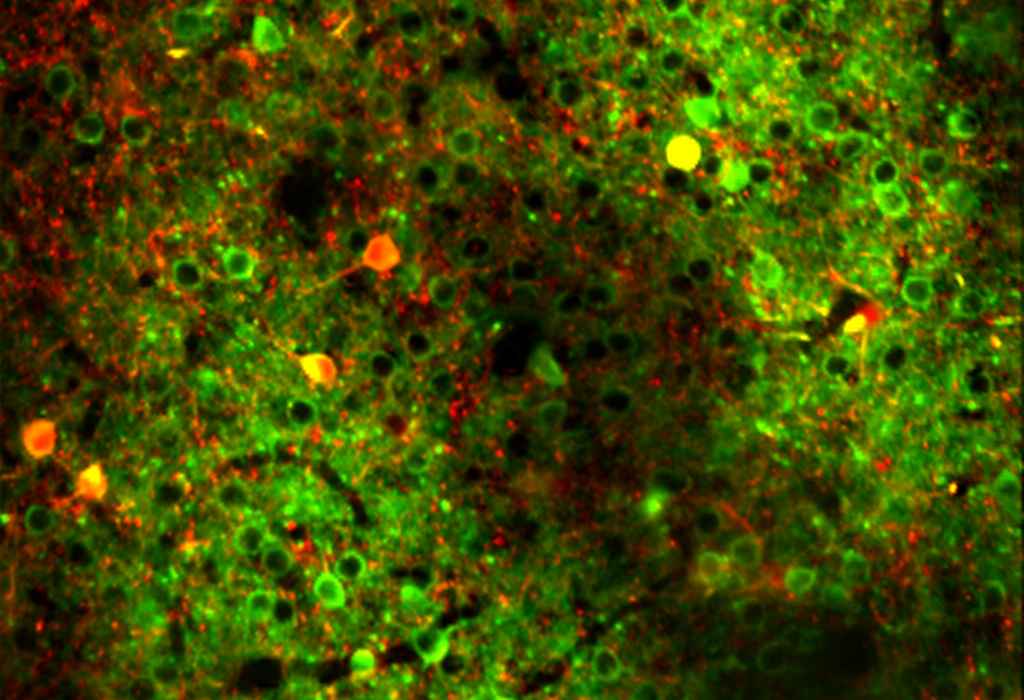Dr. M. (Mototaka) Suzuki
- Science Park 904
- Room number: C4.104
-
Postbus 94246
1090 GE Amsterdam
-
Career
- Ph.D., École Polytechnique Fédérale de Lausanne, Switzerland
- Postdoc in Monkey Neurophysiology, Columbia University, USA
- Postdoc in Rodent Neurophysiology, Humboldt-Universität zu Berlin, Germany
- Assistant Professor in Neuroscience, University of Amsterdam, Netherlands
-
Select Publications
Granato, A., Phillips, W.A., Schulz, J., Suzuki, M., & Larkum, M.E. (2024) Dysfunctions of cellular context-sensitivity in neurodevelopmental learning disabilities.
Neuroscience and Biobehavioral Reviews 161, 105688. https://doi.org/10.1016/j.neubiorev.2024.105688Suzuki, M., Pennartz, C.M.A. & Aru, J. (2023) How deep is the brain? The shallow brain hypothesis.
Nature Reviews Neuroscience 24:778-791. https://doi.org/10.1038/s41583-023-00756-zSohn, J., Suzuki, M., Youssef, M., Hatada, S., Larkum, M.E., Kawaguchi, Y. & Kubota, Y. (2022) Presynaptic supervision of cortical spine dynamics in motor learning.
Science Advances 8(30):eabm0531. https://doi.org/10.1126/sciadv.abm0531Suzuki, M., Aru, J. & Larkum, M.E. (2021) Double-µPeriscope, a tool for multi-layer optical recordings, optogenetic stimulations or both.
eLife 10:e72894. https://doi.org/10.7554/eLife.72894Aru, J., Suzuki, M. & Larkum, M.E. (2020) Cellular mechanisms of conscious processing.
Trends in Cognitive Sciences 24(10):814-825. https://doi.org/10.1016/j.tics.2020.07.006Suzuki, M. & Larkum, M.E. (2020) General anesthesia decouples cortical pyramidal neurons.
Cell 180(4):666-676. https://doi.org/10.1016/j.cell.2020.01.024Suzuki, M. & Larkum, M.E. (2017) Dendritic calcium spikes are clearly detectable at the cortical surface.
Nature Communications 8(1):276. http://doi.org/10.1038/s41467-017-00282-4Suzuki, M. & Gottlieb, J. (2013) Distinct neural mechanisms of distractor suppression in the frontal and parietal lobe.
Nature Neuroscience 16(1):98-104. http://dx.doi.org/10.1038/nn.3282 -
Research Interests
1. The Shallow Brain Hypothesis
Coming soon... See our new publication. https://doi.org/10.1038/s41583-023-00756-z
2. Dendritic Integration Theory (DIT) and its experimental validation
In 2020 Jaan Aru, Matthew Larkum and I formulated the Dendritic Integration Theory (DIT; Aru, Suzuki & Larkum, Trends Cogn Sci 2020). The theory posits that apical dendrites of cortical layer 5 pyramidal neurons play a central role in integrating large-scale cortico-cortical and thalamo-cortical loops that are essential for conscious perception. Unlike many abstract theories previously proposed, a distinguishing feature of DIT is that the theory spotlights a specific cellular mechanism—pyramidal cell dendrites—as the fulcrum at which these two apparently-orthogonal loops intersect.
Aru, Suzuki & Larkum, Trends Cogn Sci 2020 DIT makes a lot of testable predictions and my team will experimentally test these predictions using novel micro-optical tools (see below). The research questions of particular relevance to DIT include, but not limited to:
- Does sleep decouple cortical pyramidal neurons like general anesthesia does? Does the coupling change during REM and/or non-REM sleep?
- Does local decoupling of pyramidal neurons lead to loss of consciousness? Are there any hotspots?
- What are the relative contributions of parallel thalamo-cortical pathways to the coupling of cortical pyramidal neurons?
3. Developing novel neuroscientific tools
My previous studies demonstrated that novel micro-optical tools enabled unprecedented experiments and led to unexpected findings (Suzuki & Larkum, Nat Commun 2017; Suzuki & Larkum, Cell 2020; Suzuki et al., eLife 2021). My team aims to further develop novel tools that have the potential to enable us to make ground-breaking discoveries.
Suzuki & Larkum, Nat Commun 2017 Suzuki, Aru & Larkum, eLife 2021 -
Collaborations
With Prof. Cyriel Pennartz and Dr. Jaan Aru, I have recently developed a new theory -- The Shallow Brain Hypothesis -- based on our previous research findings. The paper has been published from Nature Reviews Neuroscience. Experiments driven by the new theory will follow. Prof. Pennartz and I also collaborate in the Zwaartekracht (Gravitation) grant for holographic imaging and stimulation. With Dr. Umberto Olcese, we aim to understand the large-scale thalamo-cortical network while animals are engaged in a multimodal sensory integration task. Another topic of interest for our collaboration is the cellular mechanisms of sleep. With Dr. Conrado Bosman, the cross-species analysis of cortical layer 5 pyramidal neurons and their dendritic calcium spikes as well as the application of the micro-optical probe I have recently developed to the ferret cortex in vivo is the current target. With computational neuroscientist Dr. Jorge Mejias, we combine experimental and computational approaches to study dendritic calcium spikes and cortico-thalamic interactions. With Dr. Jan Willem de Gee, neuromodulators are one of our common interests for collaborations. With him, clinical translation of my basic research findings will be sought.
-
Publications
2023
 Suzuki, M., Pennartz, C. M. A., & Aru, J. (2023). How deep is the brain? The shallow brain hypothesis. Nature Reviews Neuroscience, 24(12), 778-791. https://doi.org/10.1038/s41583-023-00756-z [details]
Suzuki, M., Pennartz, C. M. A., & Aru, J. (2023). How deep is the brain? The shallow brain hypothesis. Nature Reviews Neuroscience, 24(12), 778-791. https://doi.org/10.1038/s41583-023-00756-z [details]
This list of publications is extracted from the UvA-Current Research Information System. Questions? Ask the library or the Pure staff of your faculty / institute. Log in to Pure to edit your publications. Log in to Personal Page Publication Selection tool to manage the visibility of your publications on this list. -
Ancillary activities
No ancillary activities
